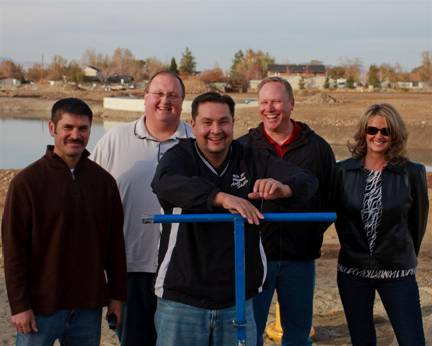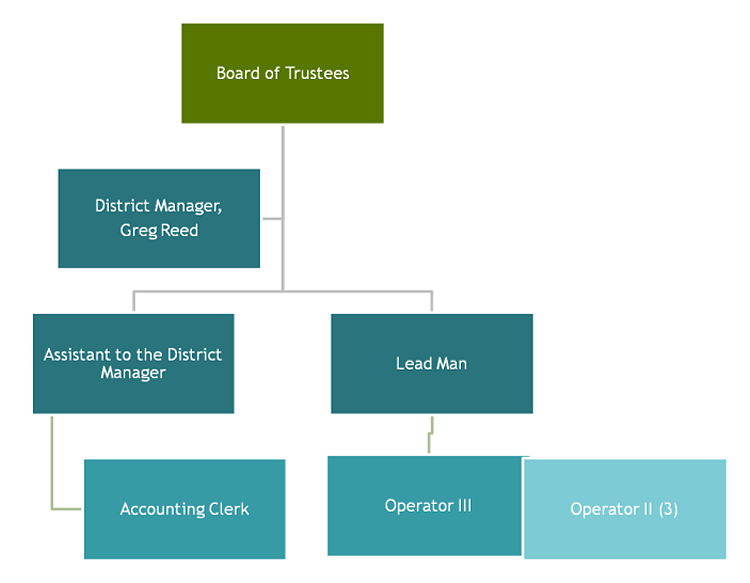

Vegetation, dead and down fuels, and topographic features contribute to the potential fire hazard around wildland-urban interface communities. The Carson River is a possible helicopter dip spot. There are emergency generators for the well pumps that supply the tanks. There are two water storage tanks (2.5 million-gallons) that supply the hydrant system and are available for drafting sources. Hydrants are available within 500 feet of residences in the newer subdivisions, however hydrants are not available for older homes on the west side of the community. Appendix E lists the type and number of fire suppression vehicles located at each EFFPD and Douglas County VFD station. See Tables 4-2 and 4-3 for more information on the typical fire suppression response for first-alarm wildland-urban interface fires in Douglas County. The Gardnerville Ranchos VFD reported thirty volunteers at the time of the assessment (East Fork Fire Protection District website). Station 7 responded to over 500 calls in 2003. The Gardnerville Ranchos Volunteer Fire Department and East Fork Fire and Paramedic Districts combination career-volunteer staffed department provide structure and wildland fire protection to the Gardnerville Ranchos. 12.1.4 Suppression Capabilities Wildfire Protection Resources

12.1.3 Defensible SpaceĪlmost all of the homes assessed had landscaping that meets the minimum recommended defensible space to help protect the home from damage or loss during a wildfire. Very few of the homes observed have unenclosed balconies, porches, decks, or other architectural features that create drafts and provide areas where sparks and firebrands can be trapped, smolder, ignite, and rapidly spread fire to the home. Approximately forty percent of homes had flammable wood shake roofs. Utilities: Utilities were a combination of above ground and below ground power, and utilities have adequately maintained right-of-ways and pose only a low ignition risk to the community.Īll of the homes in the interface were built with treated wood siding materials, stucco, vinyl, brick, or other fire resistant siding materials.Clear and visible signage is important to aid fire suppression personnel in locating residences during poor visibility conditions that occur during a wildland fire. Residential addresses were easily visible form the road for most of the homes assessed. Signage: A majority of streets had signs that are easily visible from the road.The secondary roads are either loop roads or have cul-de-sac terminus points that provide adequate room for fire suppression apparatus to turn around. The primary and secondary roads in the community are generally greater than 24 feet wide, paved, and have a gradient less than five percent. Roads: Centerville Lane, Kimmerling Lane, and Riverview Drive are the primary roads providing ingress and egress for the community.Lot sizes are primarily less than one acre throughout the Ranchos (see Figure 12-1). In many areas subdivisions border wildland fuels with a clear line of demarcation between the fuels and the residences. The Gardnerville Ranchos community exhibits the characteristics of a classic wildland-urban interface community. The low rating is attributed the widespread presence of defensible space around homes, ignition-resistant or non-combustible construction materials, and fire safe community design. A summary of the factors that contribute to this hazard rating is included in Table 12-2.

The hazard assessment resulted in classifying the Gardnerville Ranchos community in the Low Hazard category During the assessment the RCI Project Team evaluated 270 residences along the interface. The Ranchos, as the community is usually referred to, is situated on flat benches and along the Carson River floodplain. The community of Gardnerville Ranchos is located 0.6 miles southwest of the Town of Gardnerville, Nevada. 12.0 Gardnerville Ranchos 12.1 Hazard and Risk Assessment


 0 kommentar(er)
0 kommentar(er)
